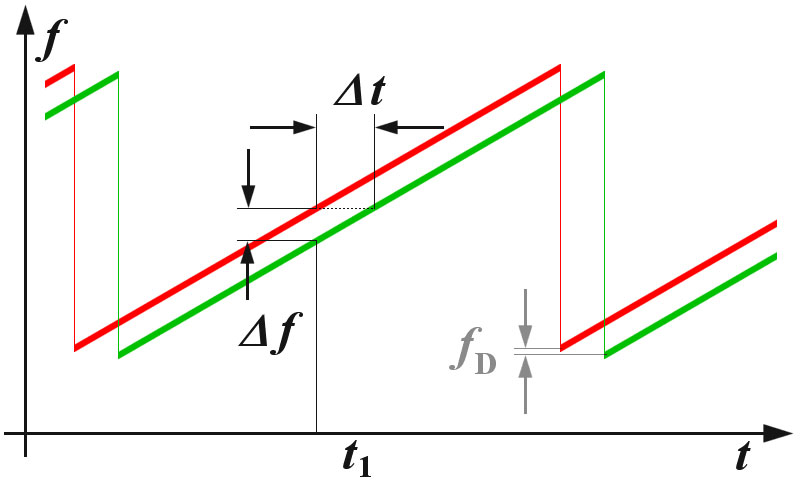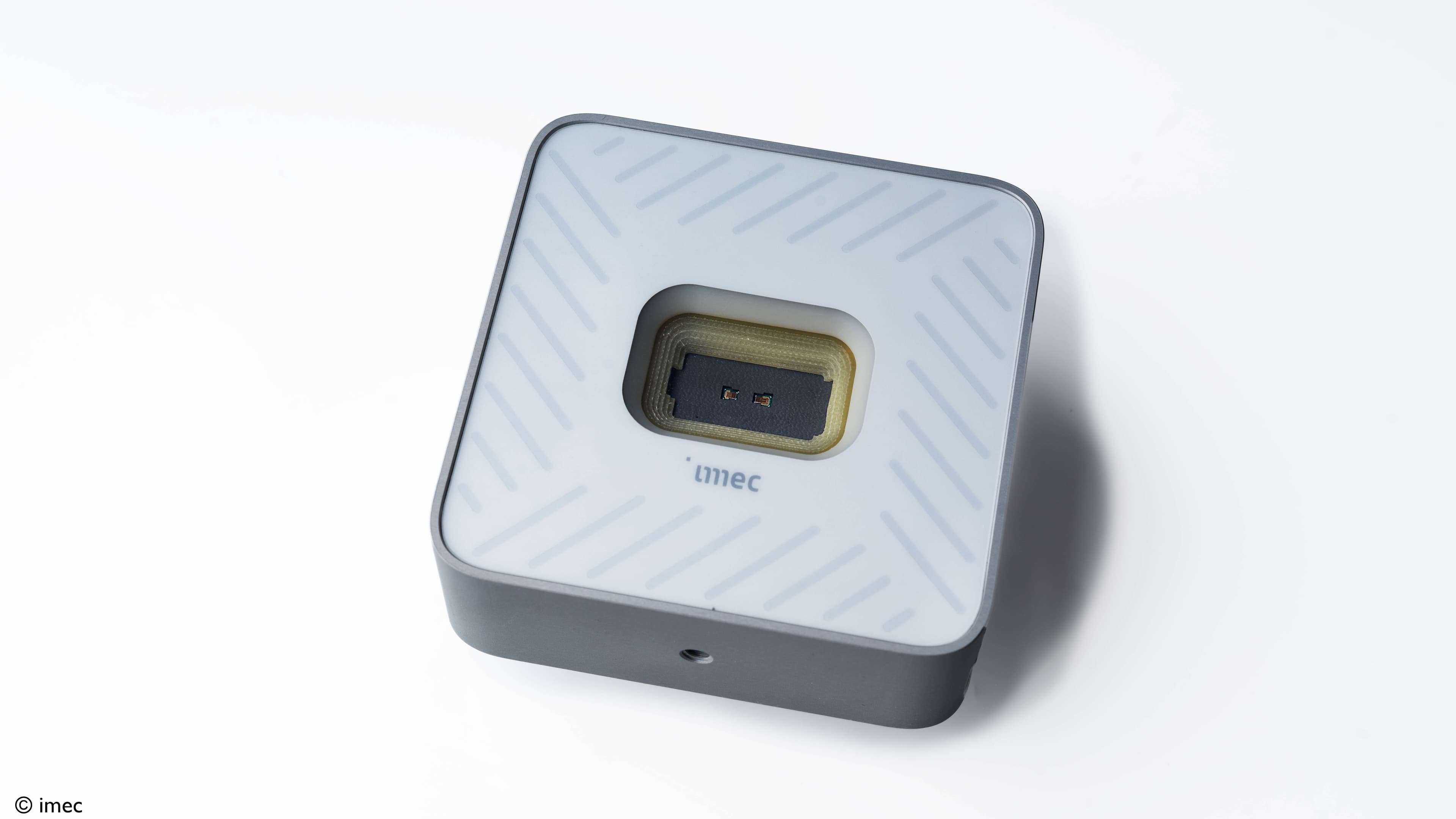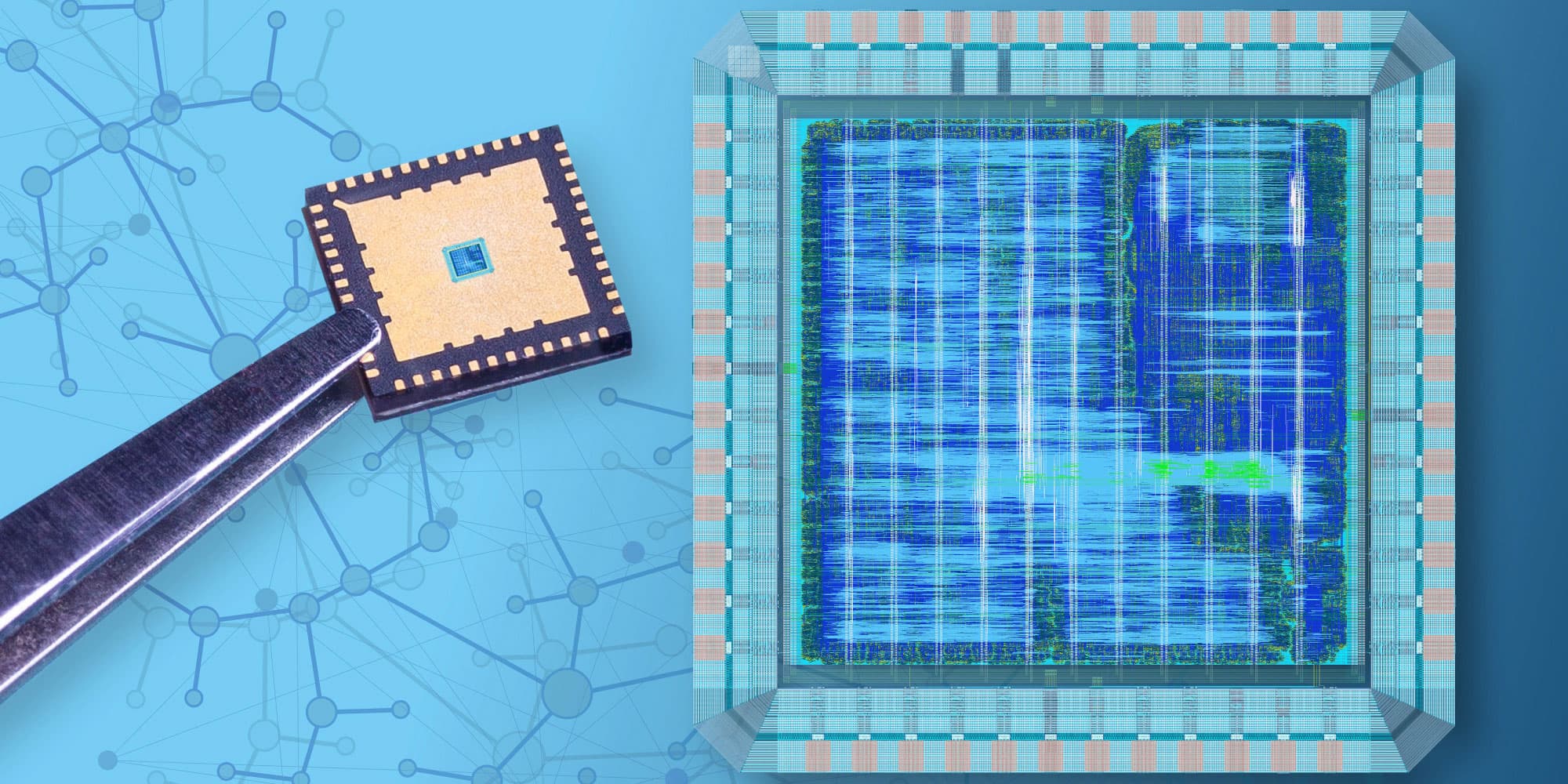This week, at the International Solid-State Circuits Conference (ISSCC) in San Francisco, imec will demonstrate a novel low-power and extremely accurate Phase Locked Loop (PLL) for Frequency-Modulated Continuous-Wave (FM-CW) radars. This PLL will be the key building block for a millimeter-wave motion detection radar at 60GHz. When a visitor waves hands before the indoor radar, the position and speed is visualized in real-time. The radar RF front-end is fully integrated in a 28 nanometer CMOS chip.
Radar technology has evolved considerably. Ten years ago, imec started to investigate how radar sensors can be made more energy-efficient, smaller and cheaper. The integration into generally available CMOS technology was a historic breakthrough. Since then, millimeter wave radars have become suitable for mass production at a low price per unit. The growing production volume of radar sensors for cars helped to further reduce the cost.
The interface of the future
Today, radar technology is ready for the next big step: the use in wearables, mobile phones, drones and all kinds of IoT sensors. This will open a wide range of new applications. One of them is already on sale now. Google has integrated a 60 GHz radar developed by Infineon into its latest smartphone, the Pixel 4. The radar chip is able to recognize hand gestures: by waving your hand above the screen, you can operate the phone.
"The first radar in a phone is a nice technological showcase, but for a real breakthrough of radar applications some technological hurdles still have to be resolved”, says Barend van Liempd, program manager radar at imec. “We want to make a difference by choosing CMOS instead of silicon-germanium. The transceiver then can be integrated into the digital post processor, which offers the speed and power benefits of scaled CMOS.”
“If a radar chip can be integrated into a mobile phone, then it might as well be integrated into other devices”, says van Liempd. He’s convinced radar will shape the way in which we will control smart devices. “Radar technology can not only replace swiping, but also your keyboard or mouse. A radar sensor can follow the movement of your palm to allow interaction on the screen, for instance, or register your keystrokes as you type on a desk. It will even become possible to control augmented or virtual reality with your hands or to interact with holograms. These kinds of intuitive actions will open up all kinds of new applications in consumer electronics".
To get the technology into people's living rooms, the energy consumption still needs to be reduced drastically. "You can integrate a radar chip in a mobile phone, smart watch or drone, but you don’t want to charge the battery all the time. Reducing the power consumption is the big challenge in this research field. With the presented PLL that consumes only 12 mW and delivers state-of-the art noise and linearity performance, a major step is taken."
60 GHz radar, a jack of all trades
A radar operating at a lower frequency usually consumes less power but is also less sensitive. A 24 GHz radar, for example, combines low power consumption with moderate resolution, but the radar would be relatively large. On the other hand, if you want to detect micro-movements with very high accuracy, a radar operating at 140 GHz seems better suited. It would be a very small sensor achieving a much better resolution at the cost of an increased power consumption.
Between these two extremes lies the 60 GHz radar, which combines the best of both worlds. This low-power radar can be used for detecting people, recognizing gestures as well as tracking vital signs. Compared to the 79 GHz band reserved for automotive applications, the frequency band around 60 GHz has the advantage of being a license-free ISM band, which can be used for all kinds of new IoT applications.
Thanks to a new transceiver architecture, the power consumption has been made significantly lower compared to state-of-the-art 60 GHz radars. In addition, there is the low-power phase-locked loop (PLL), which forms, as it were, the central nervous system of the radar.
The phase-locked loop, the nervous system of a radar
Just like the hypothalamus regulates blood pressure or heart rate in our body, the PLL will act as the control system for a radar, regulating the frequency. In order to efficiently integrate an antenna into CMOS technology, an FM-CW (Frequency-modulated Continuous Wave) radar is used. Here, the carrier frequency of the emitted radio wave is modulated over a certain bandwidth. This is done by the PLL as it generates ‘chirps’, signals in which the frequency increases linearly over time, according to a saw tooth function. As soon as the reflected wave returns, the time delay and the distance to the target can be determined from the frequency difference.

If the frequency increases linear in time, the time delay in the FM-CW-radar can be determined from the frequency difference.
“To reach a high accuracy, the frequency needs to increase perfectly linear in each saw tooth. Furthermore, the chirp slope should be as high as possible, resulting in a short chirp period, that can be repeated frequently. For a nearby object, a high chirp slope results in a higher demodulated frequency in the receiver, which can be better detected. The small chirp time also has another advantage: you can use multiple transceivers at the same time, which allows an accurate determination of the angle at which a target is detected”, explains Jan Craninckx, Distinguished Member of Technical Staff at imec.
In order to accurately determine the distance and direction of an object, you thus need a PLL that generates fast and highly linear chirps. You also need to reach a high modulated frequency, as the bandwidth determines the resolution of the radar. The big challenge was to design a PLL that meets all these conditions without consuming too much power.
This week at the International Solid-State Circuits Conference, imec announces a new PLL that achieves this object. The PLL generates modulated waves centered around 10 GHz, the frequency of which increases by 1.2 GHz (or 12 %) in just 51.2 microseconds. The linear increase of 23 MHz per microsecond has an uncertainty (an rms-deviation) of 90 kHz. In its fastest mode the same bandwidth is covered in only 12.8 microseconds with a rms frequency error of 168 kHz. The PLL only consumes 12 mW, which is a phenomenal reduction in power compared to other designs.
"This low-power PLL is a significant step in the development of a low-power 60GHz radar," says Craninckx. The 10 GHz signal generated by the PLL will be subsequently multiplied by 6 to reach 60 GHz, which also increases the bandwidth by the same factor. In this way, you get a 60 GHz radar with a bandwidth of 7.2 GHz that can detect high-resolution objects. The compact low-energy radar chip can then be used to detect movements, to recognize gestures or to measure someone's heartbeat. The range of applications is as broad as one can imagine.
Want to know more?
- The imec team described the PLL in more detail in an ISSCC paper. If you would like to receive this paper, you can request one via our contact form.
- Are you interested in working with imec’s 60 GHz chips? Get in touch via the contact form. to discuss an application partnership.
- Imec’s research on radar technologies broadly separates into two activity fields, namely high-resolution imaging radar technologies and radar technologies for IoT. Imec’s R&D radar platforms build upon those results to enable companies to work with the R&D results towards their future applications. Furthermore, Imec researches neuromorphic sensing technology that combines radar and other sensors with smart AI post-processing techniques. Contact us via the contact form if you are interested in any of imec's radar technologies.

Barend van Liempd received his BSc and MSc in electrical engineering from the Technical University Eindhoven in 2009 and 2011 respectively. In 2017, he was awarded his doctorate from the Vrije Universiteit Brussel, in conjunction with imec. From 2011 to 2014, he worked as an R&D engineer at imec on multi-standard transceivers. He then became a PhD researcher and later, in 2017, senior researcher. In 2018, he was appointed as program manager radar and he currently leads imec’s radar IC R&D activities. Barend’s interests focus mainly on analog, RF and millimeter wave circuits for wireless applications and sensors. He is the author and co-author of over 30 papers, patents and patent applications. In 2015, he received the NXP Prize at the European Microwave IC (EuMIC) conference.

Jan Craninckx obtained his MSc and PhD degree in microelectronics from KU Leuven, in 1992 and 1997 respectively. From 1997 to 2002, he worked as a senior RF engineer with Alcatel Microelectronics on the integration of RF transceivers for GSM, DECT, Bluetooth and WLAN. In 2002 he joined imec, where he currently is distinguished member of technical staff for RF, analog and mixed-signal circuit design. His research focuses on the design of CMOS RF transceiver front ends, covering all aspects of RF, analog and data converter design. He is an IEEE Fellow and editor-in-chief of the IEEE Journal of Solid-State Circuits.
More about these topics:
Published on:
17 February 2020












